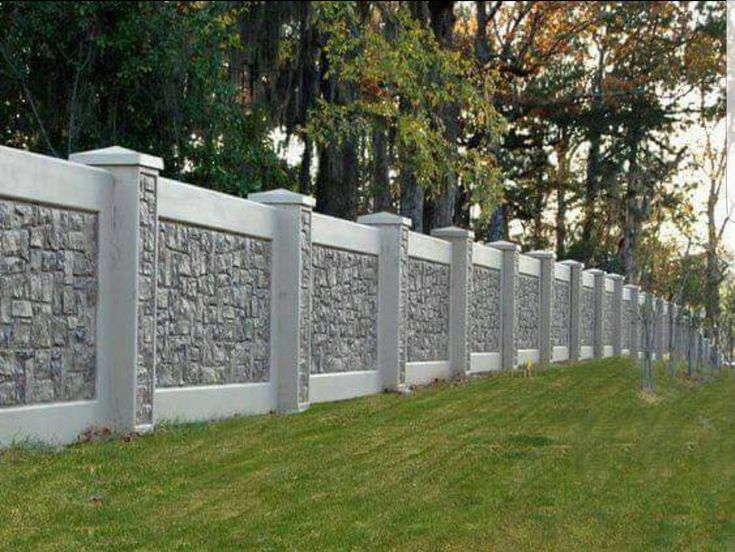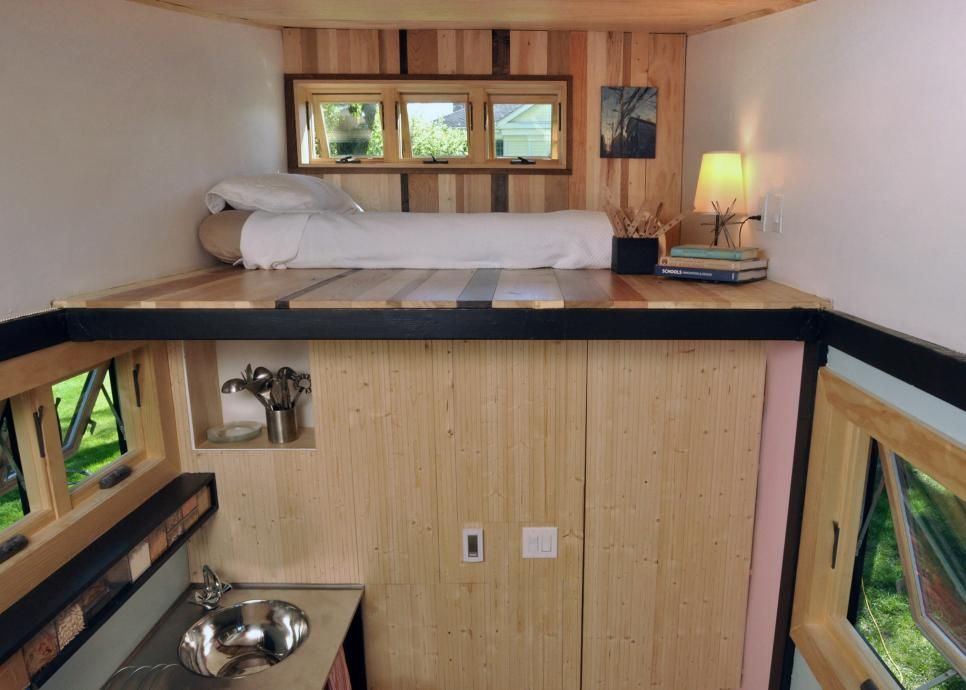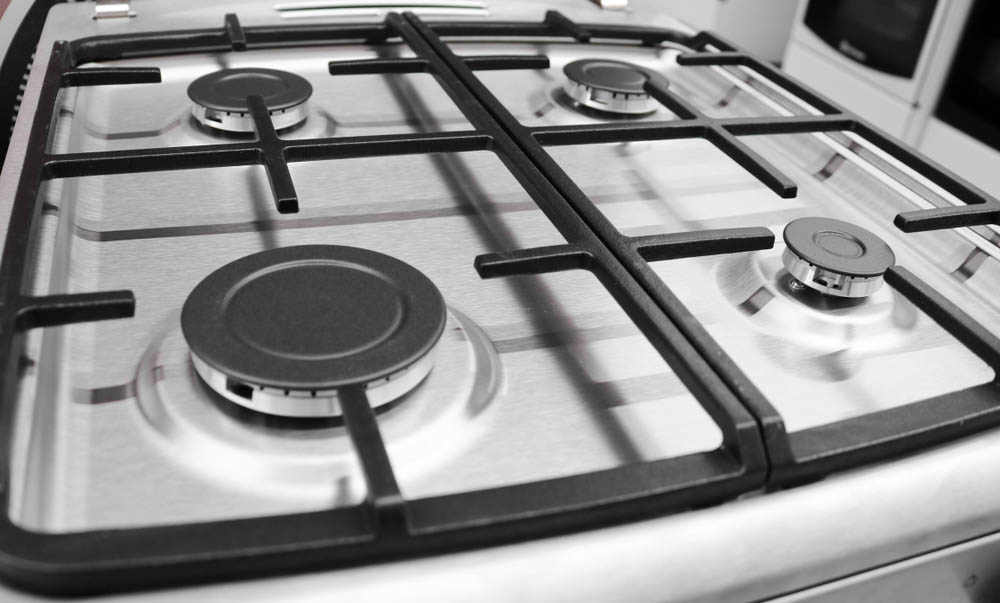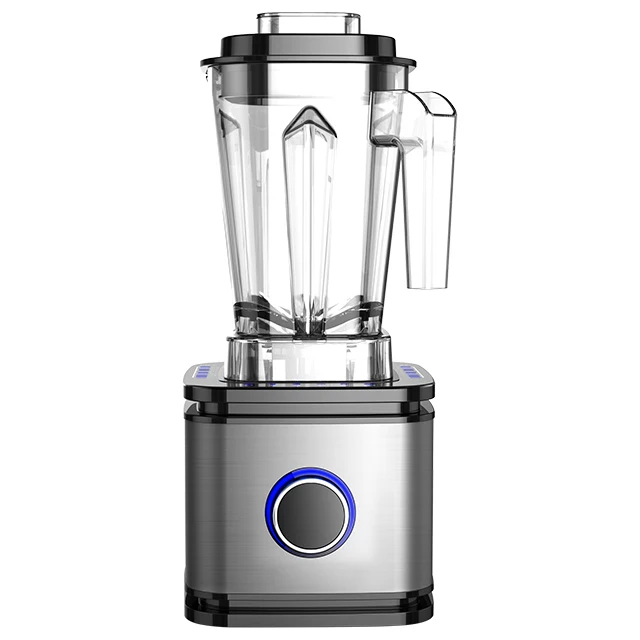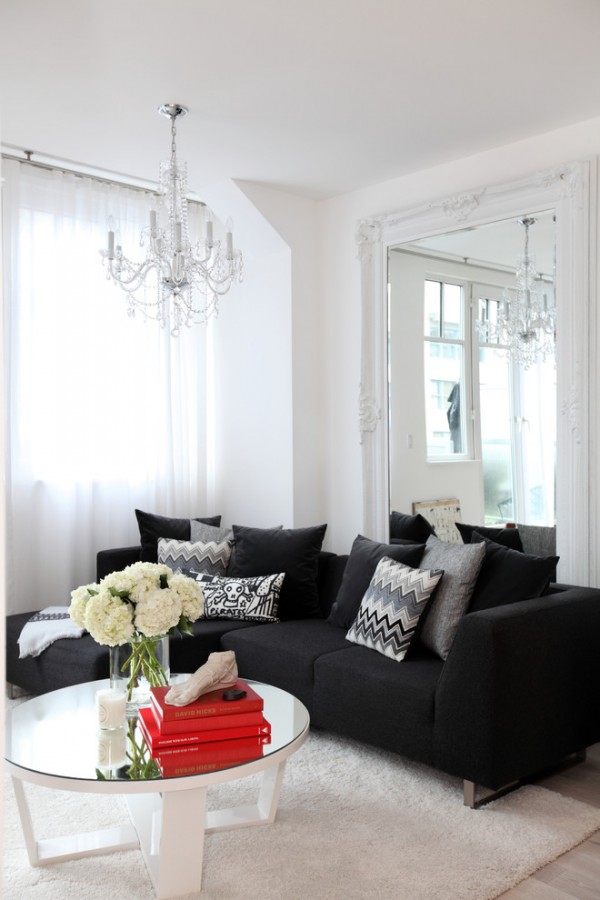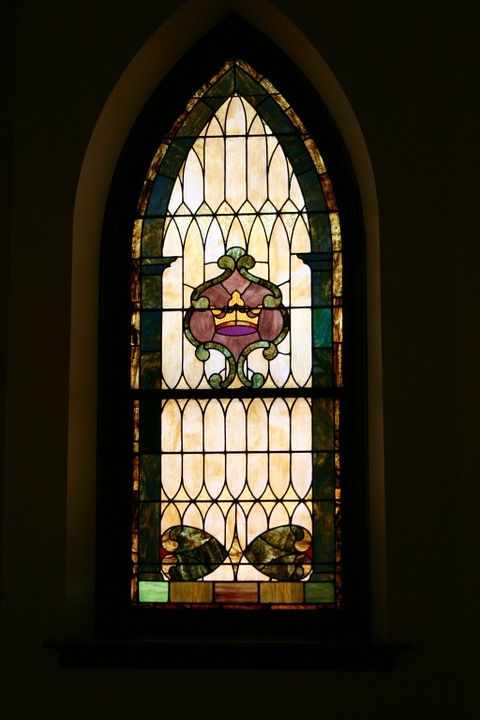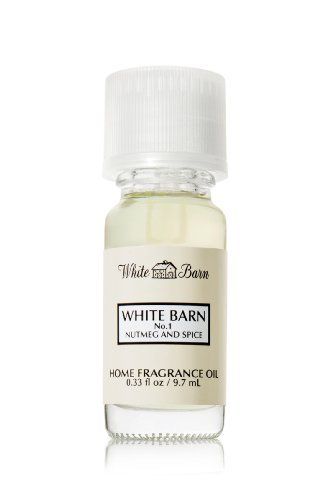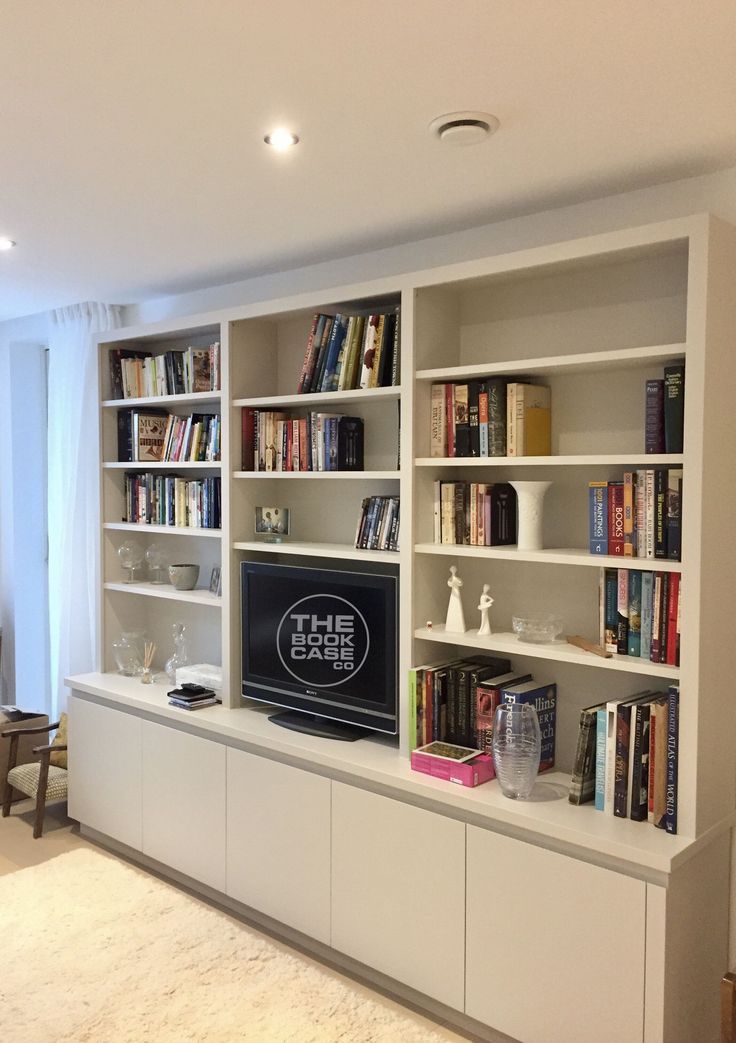Ideas for boundary walls
30 Amazing Boundary Wall Ideas For You
If you’re like most people, you probably think of boundary wall ideas as a necessary evil.
They’re an eyesore, but they also serve an important purpose by keeping people and animals out of your yard.
However, there are some ways to make boundary walls more attractive and less obtrusive.
In this blog post, we’ll explore some of the best ideas for boundary walls and show you how to create one that is perfect for your home. So keep reading for inspiration.
Table of Contents
Height of Boundary WallThe height of a boundary wall is an important safety consideration. A wall that is too low may not provide adequate security, while a wall that is too high can be difficult to climb in the event of an emergency. The standard height for a boundary wall ranges between 4 and 8 feet, with a minimum height of 4 feet and a maximum height of 8 feet.
Design Ideas for Residential BoundariesResidential boundaries are an important part of the home. They define the exterior of your property, and help to maintain its privacy and security. There are many different designs that can be implemented for residential boundaries, including:
- Japanese Garden Wall
- Picket Fences
- Stucco Concrete Wall
- Green Wall
- Metal Fence Boundary Wall
- Wrought Iron Wall
- Sustainable Fencing
- Exposed Brick Wall
- Peek-a-Boo Compound Wall
- Stone Cladded Boundary Wall
- Gabion wall
& More
A japanese garden wall is a type of garden wall that is built in the traditional Japanese style. These walls are typically made from wood or stone, and they often feature intricate carvings and designs. Japanese garden walls can be used to create a variety of different effects, ranging from a simple border around a garden to a more elaborate and functional structure.
Picket FencesPhoto from This Old HousePicket fences are a traditional barrier type.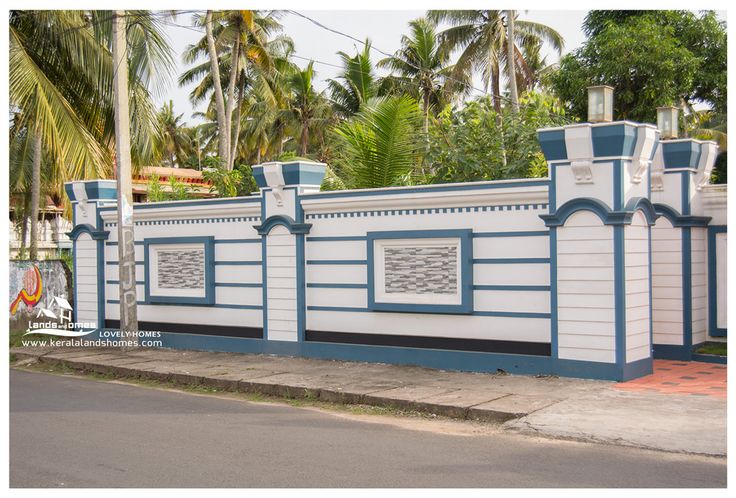 This structure is made of wood, metal, or wire that forms the shape of an open square. The fence acts as a divider between two properties and provides security for those on either side. In addition to its practical purpose, picket fences can be used as an ornamental fence or on an estate.
This structure is made of wood, metal, or wire that forms the shape of an open square. The fence acts as a divider between two properties and provides security for those on either side. In addition to its practical purpose, picket fences can be used as an ornamental fence or on an estate.
A stucco concrete wall provides durability and a more modern appearance than painted walls or brick. Stucco is a combination of cement, sand, and water that has been applied in such a way as to create a thick coat on the surface by absorption. The stucco also provides insulation between the interior and exterior.
Green wallPhoto from Seasons LandscapingA living green wall is a type of wall that is made out of plants. It is often used to create an outdoor living area. The plants help to keep the wall clean, and they add a natural look to the area. This is the ideal way to go green and incorporate nature into spaces.
One of the best ways to achieve a subtle and modern appearance in your home is by having a metal fence boundary wall. The steel-toned finish offers a sense of security without being overbearing, and will blend in seamlessly with other features on your property.
Wrought Iron fencingPhoto from Ali BabaWrought iron fencing is a popular choice for boundary walls because of its unique look and its ability to provide security. It’s also very durable, making it an ideal choice for areas that get a lot of foot traffic. Wrought iron fencing can be custom made to fit your specific needs, so you can be sure that it’ll look great and function perfectly.
Sustainable FencingPhoto by Wonder Wood WillowSustainable fencing is a very popular option for residential borders because it has the ability to be recycled. Materials like bamboo, recycled wood, old scraps etc.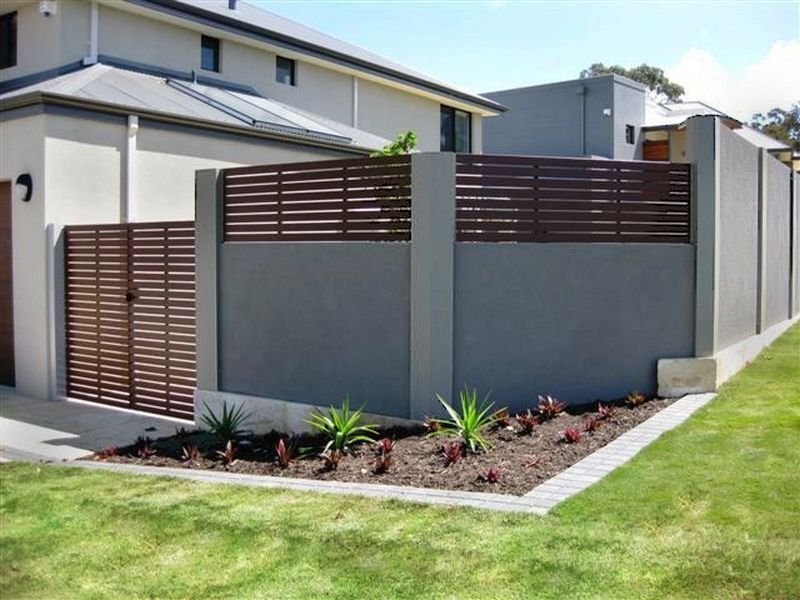 can be used to create sustainable fences.
can be used to create sustainable fences.
Exposed brick walls are a great design option for residential buildings. They are reminiscent of old-world European architecture, and they can serve as a great backdrop to modern fixtures like LED lighting, plumbing fixtures, and paint colours. Exposed brick walls also offer a fresh new look every time you repaint them.
Peek-a-Boo Compound WallPhoto from HomeLaneA peekaboo wall is a type of fence that is made up of panels with openings between them. The openings may be round, square, or slit-shaped, and they can be of varying sizes. Peekaboo walls are usually made of wood or metal, and they may be left natural or painted. The main purpose of a peekaboo wall is to provide privacy while still allowing light and air to pass through.
Stone Cladded Boundary WallPhoto from ExpertCivilA stone clad boundary wall is a wall that has been covered with stone for aesthetic or functional purposes. Stone cladding can be used to insulate a wall, which can be beneficial in cold weather climates. There are a variety of stones that can be used for cladding, including brick, granite, and limestone. And, the stone can be applied in a variety of ways, including dry-stacking, mortar-set, and interlocking.
Stone cladding can be used to insulate a wall, which can be beneficial in cold weather climates. There are a variety of stones that can be used for cladding, including brick, granite, and limestone. And, the stone can be applied in a variety of ways, including dry-stacking, mortar-set, and interlocking.
Gabion walls are a type of retaining wall that is made up of modular boxes, or cages, that are filled with rocks or other materials. The cages are then welded or wired together to create a strong, durable wall. Gabion walls are also made from galvanised steel, but they can also be made from aluminium or even plastic.
Boundary Wall Designs For Indian HomesThere are many different styles of boundary walls that can be incorporated into an Indian home. Many of these designs are traditional and easy to incorporate into a home. A few other designs include:
- Stone, Brick and Concrete Compound Walls
- Wood and Wooden panels Boundary Wall
- Metal Compound Wall Design
- Polyvinyl Chloride Fencing
- The Green Compound Wall
- Boundary Wall with TImber Infills
Stone, brick and concrete walls are a great way to add decoration and protective features to your home. The material is durable and does not need to be anchored into the ground when it’s installed. When choosing this type of wall for your home, you should consider the colours that you want it to look like when it’s complete.
The material is durable and does not need to be anchored into the ground when it’s installed. When choosing this type of wall for your home, you should consider the colours that you want it to look like when it’s complete.
There are different boundary wall designs that can be used for Indian homes. One of them is to use wood and wooden panels. These are strong, durable, smooth and easy to maintain. The panels are made from a variety of materials like bamboo, cedar, cypress, eucalyptus, oak, teak and more.
Metal Compound Wall DesignPhoto from Reno GuideA metal compound wall is a type of wall that is made from a combination of metal and another material, typically concrete. These walls are very durable and can withstand high levels of wear and tear. Metal compound walls are typically made using steel or aluminium, although other metals may also be used.
Polyvinyl Chloride FencingPhoto from BirkendalesalesPVC fencing is the most popular material used for boundary walls in India. This type of fencing is unnoticeable and can be easily installed on top of the ground. It doesn’t rust and it’s easy to maintain. Fencing can also be used to divide a common garden area into separate areas for different purposes such as a small garden, children’s play area, or a vegetable garden.
This type of fencing is unnoticeable and can be easily installed on top of the ground. It doesn’t rust and it’s easy to maintain. Fencing can also be used to divide a common garden area into separate areas for different purposes such as a small garden, children’s play area, or a vegetable garden.
A Green compound wall is a type of boundary wall that is made out of plants and is aesthetically pleasing. This is designed to be both attractive and environmentally friendly. And the living green walls (also known as vertical gardens or living walls) are a fantastic option for any property looking to enhance its space with the inherent advantages of nature.
Boundary Wall with Timber InfillsPhoto from JMHGroupA boundary wall with timber infills is a type of fence that uses natural materials to create a barrier. The fence is made of solid wood posts that are surrounded by a wooden board or railing. The posts are spaced evenly apart, and the board or railing prevents people from climbing over the fence. The fence is often used to enclose yards, gardens, or property lines.
The posts are spaced evenly apart, and the board or railing prevents people from climbing over the fence. The fence is often used to enclose yards, gardens, or property lines.
Our Favourite
Boundary Wall Designs for YouPhoto from Reno guidePhoto from Architect’s diaryPhoto from RMarblesPhoto by Fivedot Design BuildPhoto by WA Design ArchitectsPhoto from MoooolPhoto by Wison TungthunyaPhoto by Origins ArchitectsPhoto by SohuPhoto by Hekwerk WebshopPhoto from ScrapesdesignPhoto from IdeiPhoto from Garden ExpoConclusionIf you’re in the market for a new home, it’s necessary to think about what kind of boundary wall works best for you. Whether you’re looking for security, privacy or aesthetic, there are plenty of options for you to choose from. Consult with a professional to get started on finding the right boundary wall for your home.
Frequently Asked QuestionsWhat is best for a boundary wall?
Depending on the size of your property your options will vary from a simple picket fence across a small area to a larger, thicker and more durable stone or tile wall.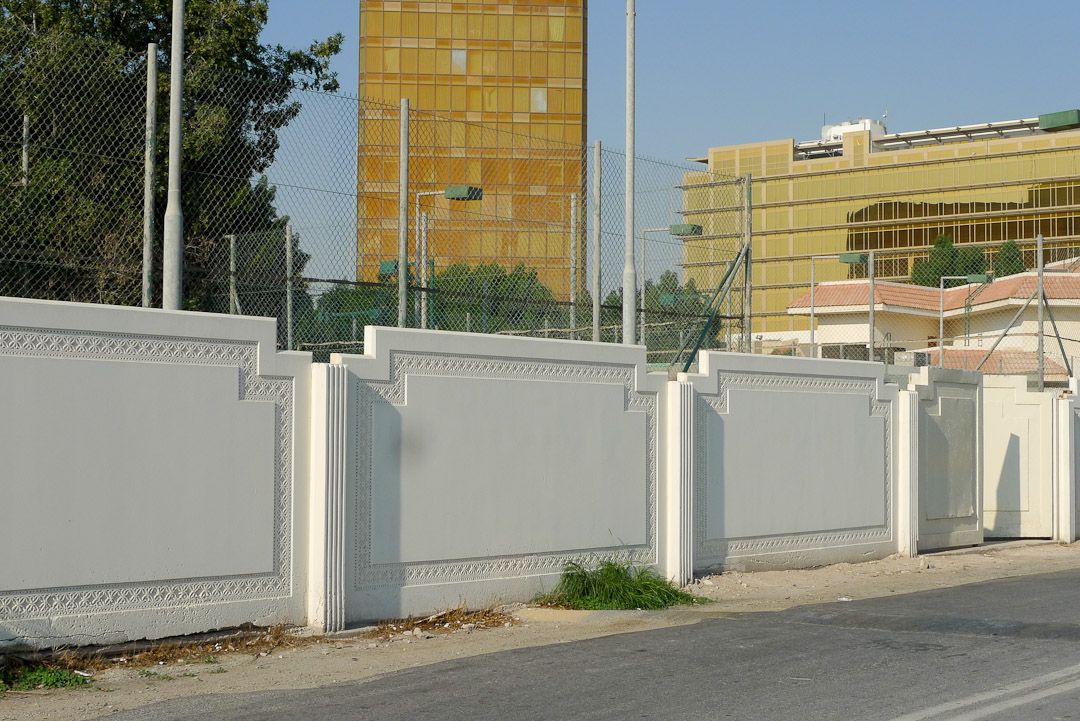 Walls are not just for your protection but they also add an aesthetic appeal to your front and backyard so ideally you could go for a 6ft tall stone cladded boundary wall or even a Stucco cement wall with a geometric pattern on it.
Walls are not just for your protection but they also add an aesthetic appeal to your front and backyard so ideally you could go for a 6ft tall stone cladded boundary wall or even a Stucco cement wall with a geometric pattern on it.
How do I make my boundary walls beautiful?
You can go for simple ideas like adding a few flower pots alongside the wall boundary or even painting the wall with a geometric pattern or design. You could also add a decorative patch on your wall, you could paint a mural onto it or even have some stone cladding on the walls to give it a rustic appeal.
What are the types of boundary walls?
There are several major types of boundary walls with the most common ones being: Stone cladded boundary wall, a Stucco boundary wall or even an exposed brick boundary wall are all common choices for a boundary wall. Stone and brick walls are preferred due to its relative ease of construction and ease of maintenance. They also have an extremely long life.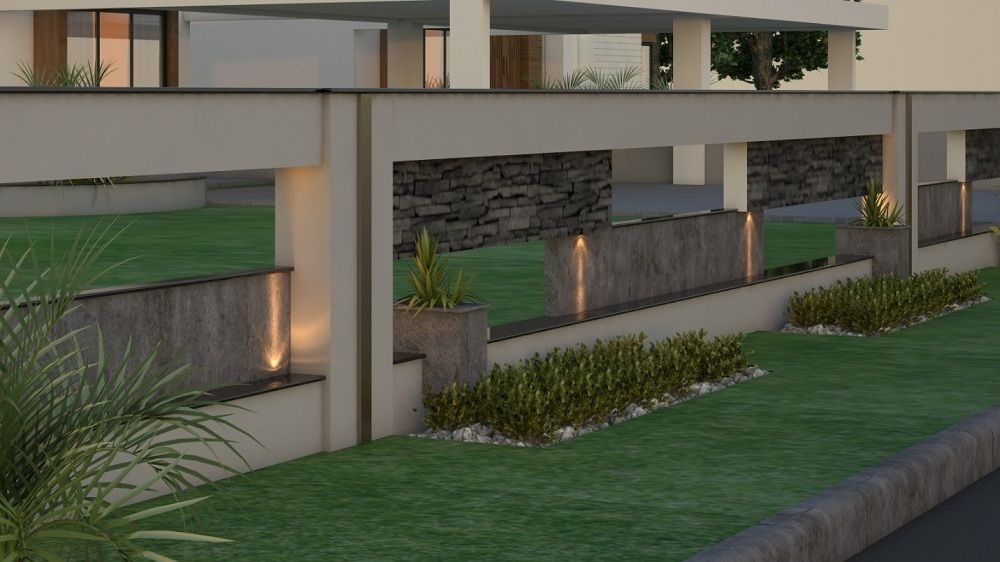
What should be the height of a boundary wall?
The average height of a boundary wall should have a minimum of 4 to 6 feet, but luxurious houses and estates usually prefer to have much larger walls ranging from 12 to 18 feet for added protection from wild animals and intruders especially in remote areas.
How can I make a boundary on my plot just for the purpose of a few years?
A simple boundary wall such as a picket fence or a 4-6 feet tall cement wall should do the trick for the case of a few years. You can even add onto this cement wall later on in case you want something stronger or larger.
What is the difference between Compound Wall, Boundary ?
Compound walls enclose the interior structure. They are usually 4 – 6 feet tall and are made of materials like concrete, cement and stone while a Boundary wall on the other hand runs along the outer edge of the property. They are usually 6 feet and above and are made up of brick, stone and concrete with barbed wire or spikes on the top of it for added protection.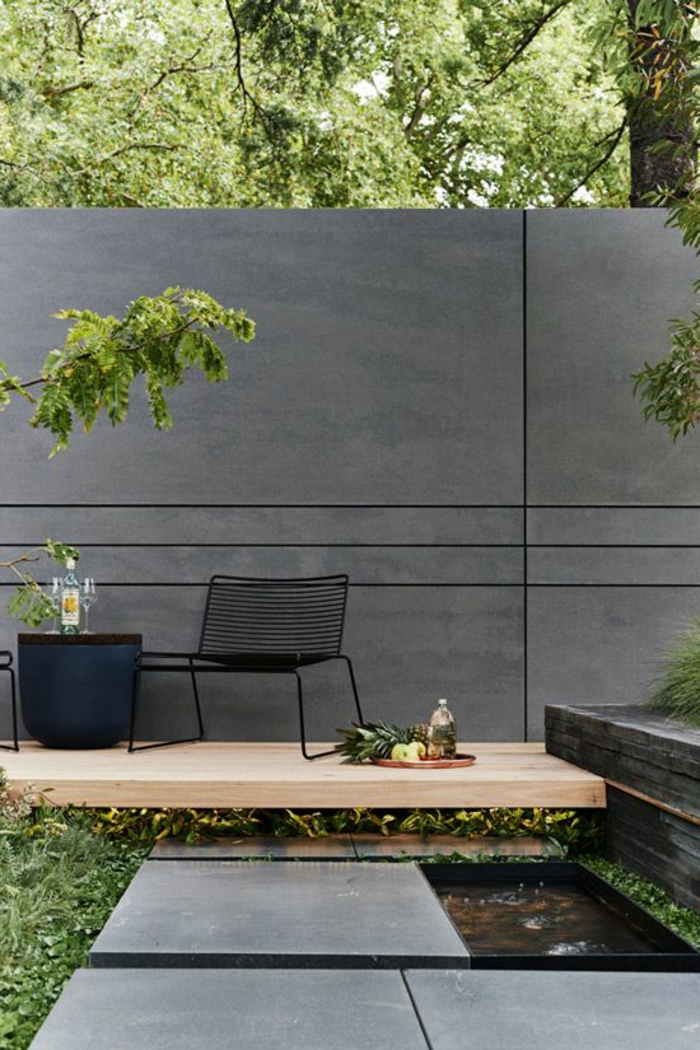
Which paint is preferable for boundary walls? Why?
The best paint for a boundary wall is usually an oil based paint because they are formulated with special types of waxes and oils that offer a long-lasting finish. This type of paint is recommended because they will not bleed or fade even after time.
Why are columns provided for compound walls?
Compound walls are very long and long structures tend to be less stable hence to provide extra support at intervals we provide the compound walls with column braces. In the event of excessive force being applied on a wall the columns would add to the overall strength of the wall and it also prevents the whole wall from collapsing and would only allow a small portion to fall over.
Which wall is better? Precast compound wall or brick ?
Precast walls are made up of concrete hence we don’t need to worry about re-painting or maintaining them frequently. Brick walls are a very popular option that many people like as they are easier to construct.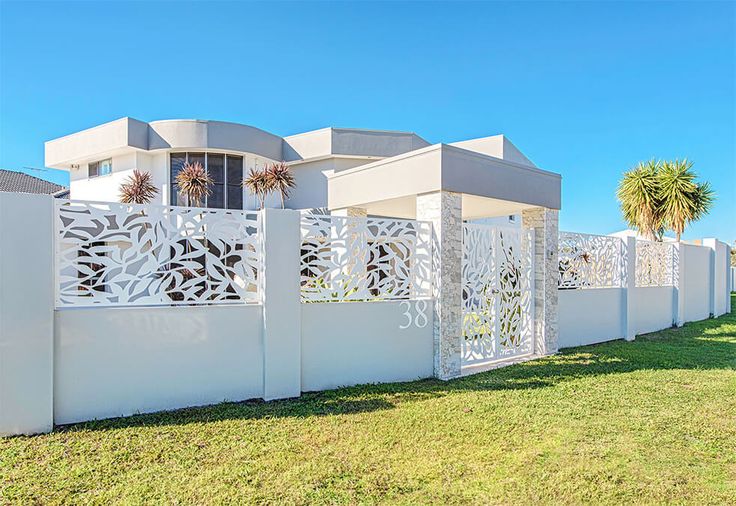 Now although precast walls are considered to be more durable than brick, it does not last as long as a brick wall does.
Now although precast walls are considered to be more durable than brick, it does not last as long as a brick wall does.
Boundary Wall Design Ideas
By : Times Property| 28 July, 2022
Share this Story
Introduction
Since they are an extension of your home, boundaries need not merely be plain walls that demarcate a residential area. Consider using them as a canvas so that every time someone enters your home, they not only get a great first impression but also see something beautiful. Boundary walls can be made more attractive by using wall treatments, design elements, and materials that go well with the building's outside face and landscape. Here are some creative ideas for adorning your home's boundary wall.
If you're like most individuals, boundary wall concepts are probably seen as a necessary evil.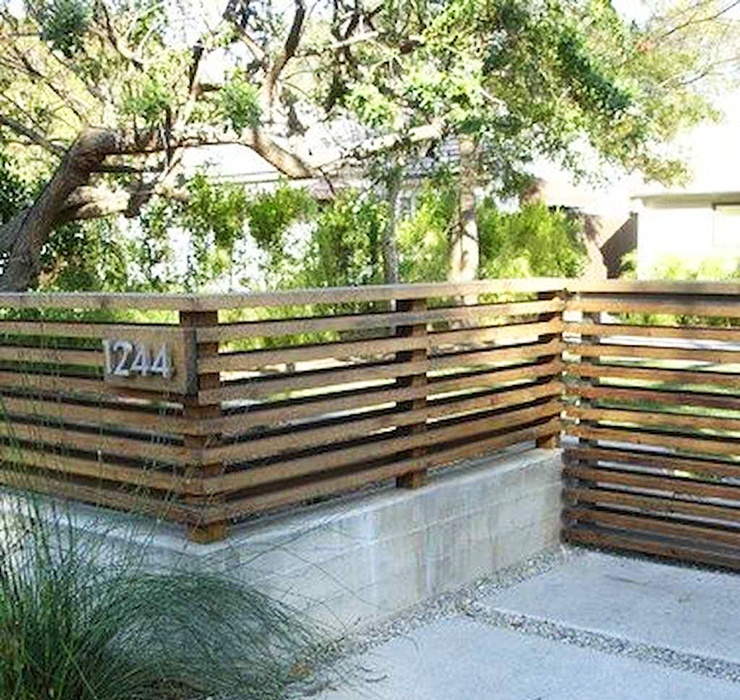
Top 10 RANGOLI DESIGN IDEAS FOR DIWALI 2022
With the festive season around the corner, one must be busy decorating their households. According to Hindu culture, during different festivals, devotees clean their houses and decorate them with the hope of welcoming their deities to their homes. Deepavali, people get their homes renovated, buy new interiors and decorate their homes w...
Despite being an eyesore, they provide a useful function by preventing people and animals from entering your yard.
Ways to a Unique Boundary Wall Design
1. Create a nook inside
Make a pretty patch in the perimeter wall. For instance, in this case, a double wall was built to add a circular niche that was embellished with 3D patterned cement art. The beautiful backdrop it creates breaks up the monotony of the charcoal-grey wall. As an insert in the niche, exterior wall tiles or special-effect paints can also be employed.
2.
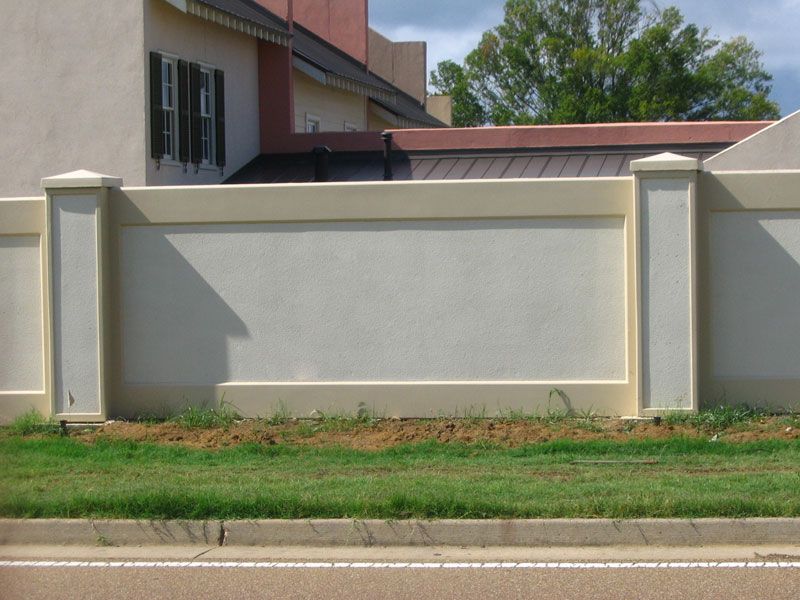 Complement
ComplementCreate an installation made of wood, metal, or terracotta to serve as a border on the inside of a panel. Observe how the metallic mural in this area appears to be hanging like a painting and becomes a focal point.
Apply paste wax as a protective layer to the outdoor metal sculptures as part of routine maintenance. This will prevent oxidation from corroding and rusting the metal. Exterior lacquers and stain coatings are suggested for protecting sculptures made of wood and terracotta, respectively.
3. Execute a mural
The public portion of the wall is given a personal touch in this instance. The vibrant, hand-painted floral design on the wall is lovely, and together they stand out. It's a fantastic way to freshen up a simple enclosure. I adore the way an antique wooden window is added to add a touch of old-world charm.
Use a UV paint finish to preserve the hand-painted mural from fading caused by direct sunlight.
4.
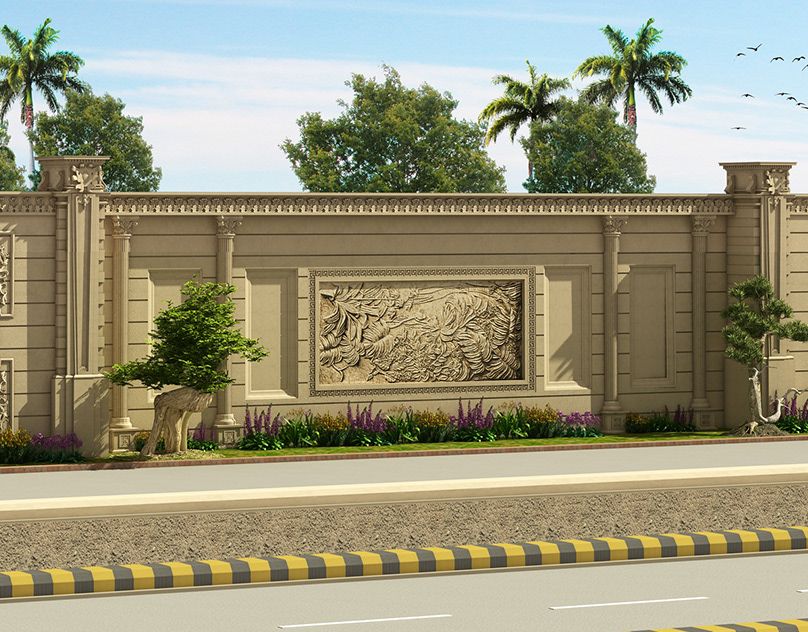 Use stone siding
Use stone siding See how a projected stone panel adds interest and a dominant element to a boundary wall that is entirely white. Don't overlook the planter boxes, which have a wood cladding finish and seamlessly blend in with the natural stone.
5. Add transparency with metal jaalis
A metal lattice screen in this house makes the boundary wall taller while also allowing for partial outside views. The wall's ivory-coloured wall tiles give it an exquisite appearance.
6. For a trendy appearance, choose travertine.
Create the boundary wall at the same time as you create the building's elevation. In this illustration, the boundary wall is covered in glass and travertine, a type of limestone, for a contemporary appearance.
7. Construct an indoor garden.
As demonstrated in this image, boundary walls make a fantastic location for vertical gardens. Plants are used to soften the brick wall.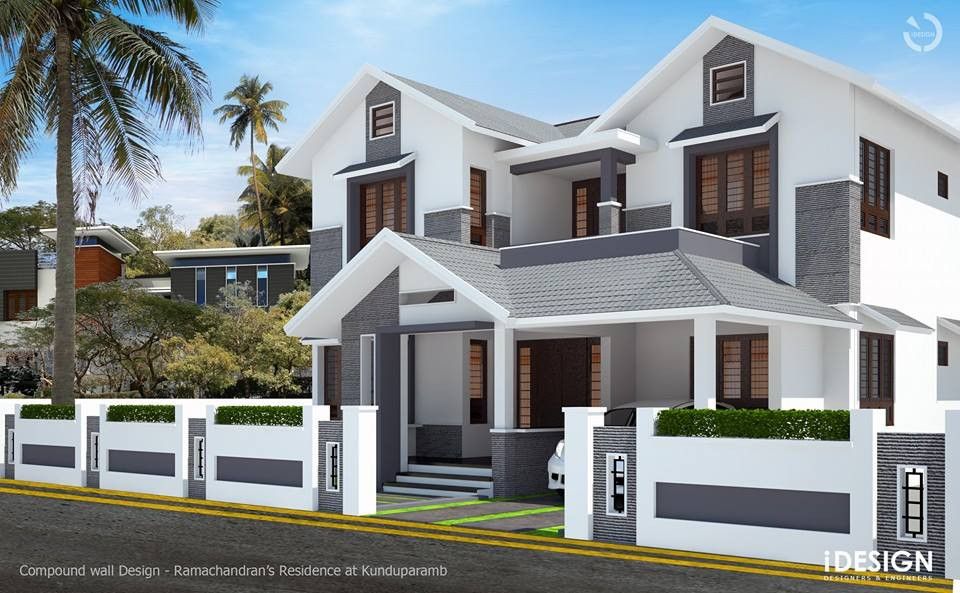 It is advisable to hire a qualified garden specialist who can complete the task correctly.
It is advisable to hire a qualified garden specialist who can complete the task correctly.
8. Add a water element.
An area is made peaceful and tranquil by the presence of water features and the sound of flowing water. These elements can accentuate entrances and enhance the immediate area around your property with a pleasant atmosphere.
Boundary Wall Design Idea: Japanese Green Wall
A garden wall constructed in the traditional Japanese manner is known as a "Japanese garden wall." Usually constructed of stone or wood, these walls frequently have elaborate carvings and patterns. From a straightforward border around a garden to a more ornate and practical structure, Japanese garden walls can be used to produce a range of diverse effects.
Boundary Wall Design Idea: Stucco Concrete Wall
Compared to painted or brick walls, a stucco concrete wall offers durability and a more contemporary appearance. Cement, sand, and water are the main ingredients in stucco, which are applied to surfaces to absorb water and form a thick coating.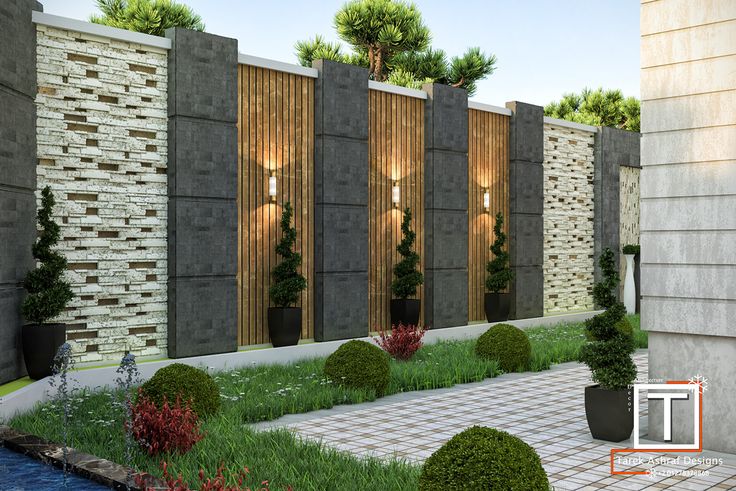 Insulation between the interior and outside is also provided by the stucco.
Insulation between the interior and outside is also provided by the stucco.
Boundary Wall Design Idea: Metal Fence
Having a metal fence boundary wall is one of the greatest methods to give your property a subtle, contemporary look. The steel-toned surface will mix in perfectly with other elements on your property and provides a sense of security without being oppressive.
Boundary Wall Design Idea: Picket Fences
One sort of classic barrier is a picket fence. This open square-shaped structure is constructed from wire, metal, or wood. The fence separates two properties while offering security to individuals on each side. Picket fences can be utilized on an estate or as a decorative fence in addition to serving a functional purpose.
Boundary Wall Design Idea: Wrought Iron Fencing
A common material for boundary walls is wrought iron fencing because of its distinctive appearance and capacity to offer security.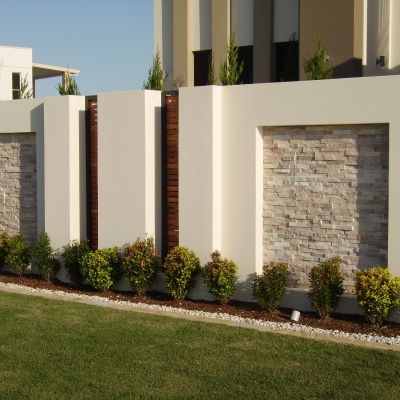 It is a great option for locations with heavy foot traffic because it is also quite durable. You can be confident that wrought iron fencing will look fantastic and perform flawlessly since it may be custom designed to meet your unique demands.
It is a great option for locations with heavy foot traffic because it is also quite durable. You can be confident that wrought iron fencing will look fantastic and perform flawlessly since it may be custom designed to meet your unique demands.
Boundary Wall Design Idea: Green Wall
An example of a wall built of plants is a "living green wall." Creating an outdoor living space is frequently employed. The plants give the room a more natural appearance and aid in keeping the wall clean. This is the best approach to greening up places and including nature.
Boundary Wall Design Idea: Exposed Brick Wall
Buildings with exposed brick walls are excellent residential structures. They have elements of traditional European architecture, and they make a beautiful contrast to contemporary paint colours, plumbing fixtures, and lighting. Exposed brick walls can also be painted to give them a brand-new appearance.
Boundary Wall Design Idea: Sustainable Fencing
Due to its potential to be recycled, the sustainable fence is a particularly popular choice for residential borders.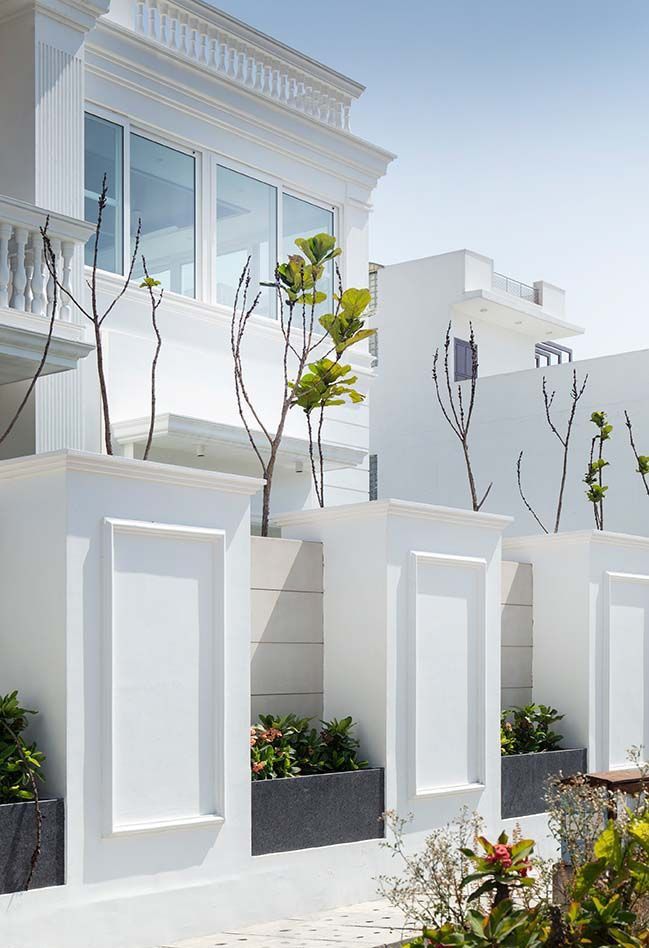 Sustainable fences can be constructed out of materials like bamboo, repurposed wood, old trash, etc.
Sustainable fences can be constructed out of materials like bamboo, repurposed wood, old trash, etc.
Boundary Wall Design Idea: Gabion Walls
Using modular boxes or cages that are filled with rocks or other materials, gabion walls are a type of retaining wall. After that, the cages are wired or welded together to form a sturdy wall. In addition to being built of galvanised steel, gabion walls can also be composed of aluminium or plastic.
Boundary Wall Design Idea: Peek-a-Boo Compound Wall
A form of fence that consists of panels with gaps between them is known as a peekaboo wall. The apertures can have different sizes and shapes, such as square, circular, or slit-shaped. Peekaboo walls are typically composed of metal or wood and may be left unpainted or painted. A peekaboo wall's primary function is to offer privacy while still allowing light and air to enter.
Boundary Wall Design Idea: Stone Clad Boundary
A wall that has been covered in stone for aesthetic or practical reasons is referred to as a stone-clad border wall.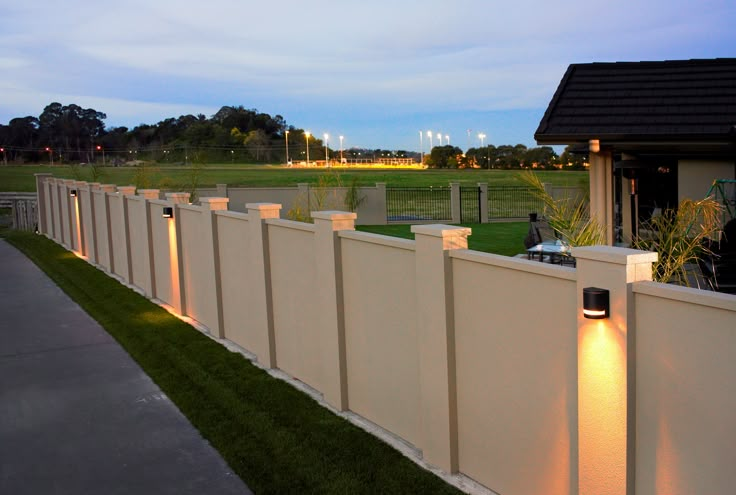 A wall can be insulated with stone cladding, which is advantageous in regions with cold climates. A wide range of stones, including brick, granite, and limestone, can be utilised for cladding. Additionally, there are other techniques to use the stone, including dry stacking, mortar setting, and interlocking.
A wall can be insulated with stone cladding, which is advantageous in regions with cold climates. A wide range of stones, including brick, granite, and limestone, can be utilised for cladding. Additionally, there are other techniques to use the stone, including dry stacking, mortar setting, and interlocking.
Boundary Wall Design Idea: wooden panels made of wood Defending Wall
For Indian dwellings, a variety of boundary wall designs are available. Utilizing wood and wooden panels is one of them. These are solid, long-lasting, smooth, and simple to maintain. A range of materials, including bamboo, cedar, cypress, eucalyptus, oak, and teak, are used to make the panels.
Boundary Wall Design Idea:Walls made of concrete, brick, and stone
Your property can be enhanced with decorative and defensive elements by adding walls made of stone, brick, or concrete. When placed, the material is sturdy and does not require ground anchoring.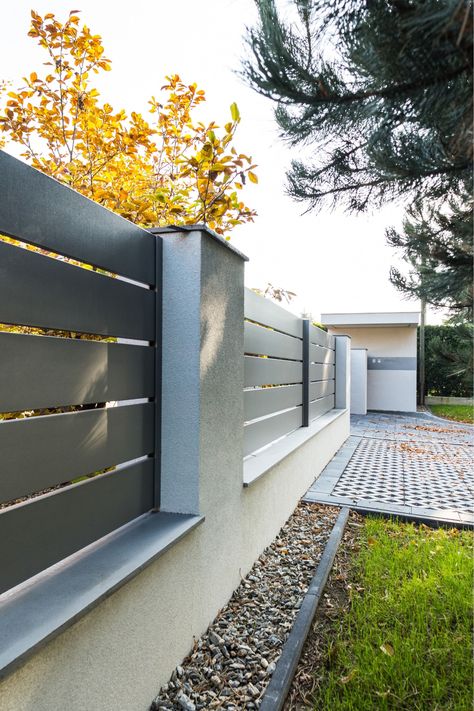 You should think about the colours you want the finished product to be when picking this type of wall for your house.
You should think about the colours you want the finished product to be when picking this type of wall for your house.
Boundary Wall Design Idea: Metal Compound Wall Architecture
A wall type known as a metal composite wall is one that combines metal with another substance, usually concrete. These walls are incredibly strong and can endure a lot of wear and tear. Steel or aluminium are generally utilized to construct metal compound walls, while other metals may also be employed.
Boundary Wall Design Idea: Vinyl Chloride Polymer Fencing
The most common material for boundary walls in India is PVC fences. This kind of fencing is discrete and simple to build on top of the ground. It doesn't rust, and maintaining it is simple. Fencing can be used to divide a shared garden space into separate zones for various uses, such as a vegetable garden, miniature garden, or children's play area.
Boundary Wall Design Idea: Wall of the Green Compound
A boundary wall consisting of plants that is aesthetically beautiful is known as a "green compound wall.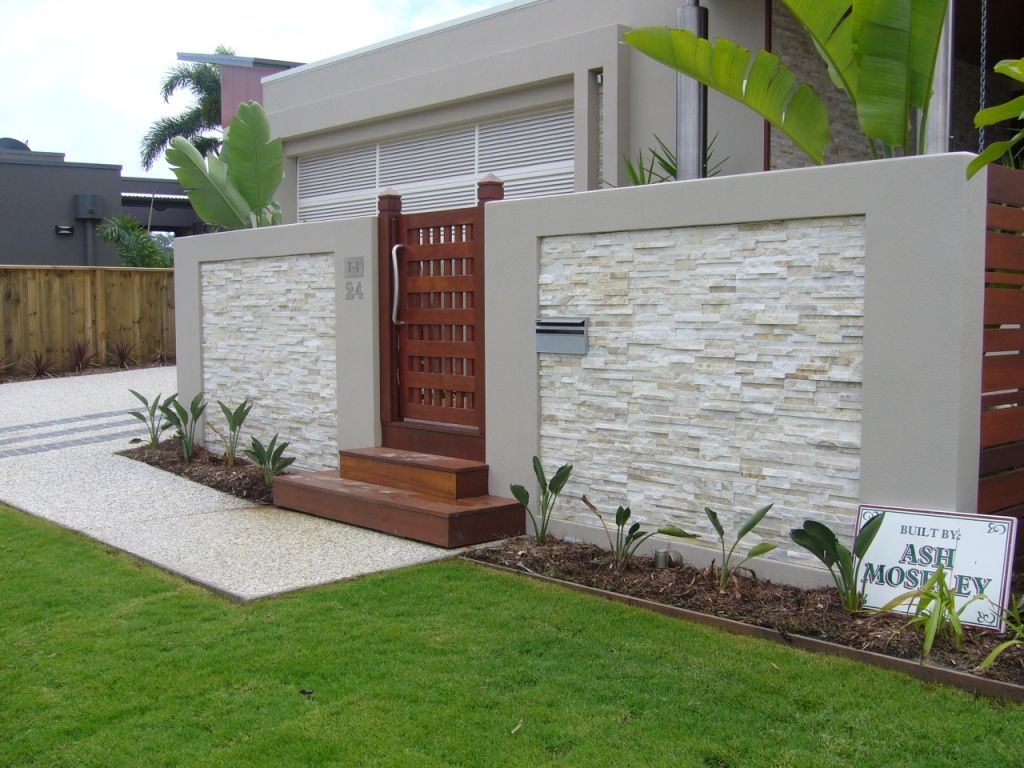 " This is intended to be both aesthetically pleasing and environmentally responsible. And living green walls, sometimes referred to as vertical gardens or living walls, are a terrific choice for any building that wants to improve its area by utilising nature's inherent benefits.
" This is intended to be both aesthetically pleasing and environmentally responsible. And living green walls, sometimes referred to as vertical gardens or living walls, are a terrific choice for any building that wants to improve its area by utilising nature's inherent benefits.
Boundary Wall Design Idea: Wooden Infills on a Boundary Wall
A sort of fence that makes use of organic materials to construct a barrier is a boundary wall with timber infills. The posts of the fence are built of solid wood, and a wooden board or railing surrounds them. People cannot climb over the fence because of the board or railing and the evenly spaced-apart posts.
Source -
Creative Ideas for Exterior Wall Covering with Natural Materials • 333+ Photos • [ArtFacade]
The effectiveness and attractiveness of the facade largely depends on the material and configuration of the house's exterior cladding. Modern ideas for external wall coverings make it possible to turn a country cottage into a unique architectural object.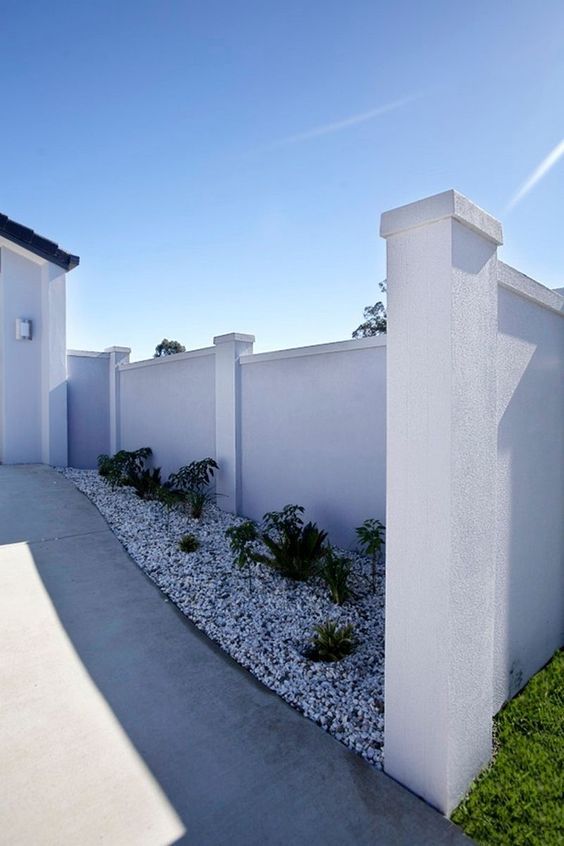 With the help of exterior decoration, the building is stylized to match the surrounding nature, practically masking it in it, or, conversely, contrastingly stand out against the background of the landscape, but maintain harmony.
With the help of exterior decoration, the building is stylized to match the surrounding nature, practically masking it in it, or, conversely, contrastingly stand out against the background of the landscape, but maintain harmony.
Let's consider the most creative options for decorating the house outside with natural materials that amaze with their originality and creativity.
The idea of external wall covering with wooden lamellas, boards
One of the most creative options in modern architecture is the decoration of external structures with a hinged frame with wooden siding. Sometimes architects offer to sheathe such a frame not completely, but leaving gaps between the boards and lamellas.
The idea looks rather unusual and functional. Due to the gaps, the structure transmits light, maintaining a visual connection between the interior space and the environment.
Behind this finish, it makes sense to install panoramic windows. The frame of wooden planks increases the privacy of the living space, optimizes the microclimate in the house, but at the same time you can enjoy the views of the surrounding areas, the building turns out to be open and bright.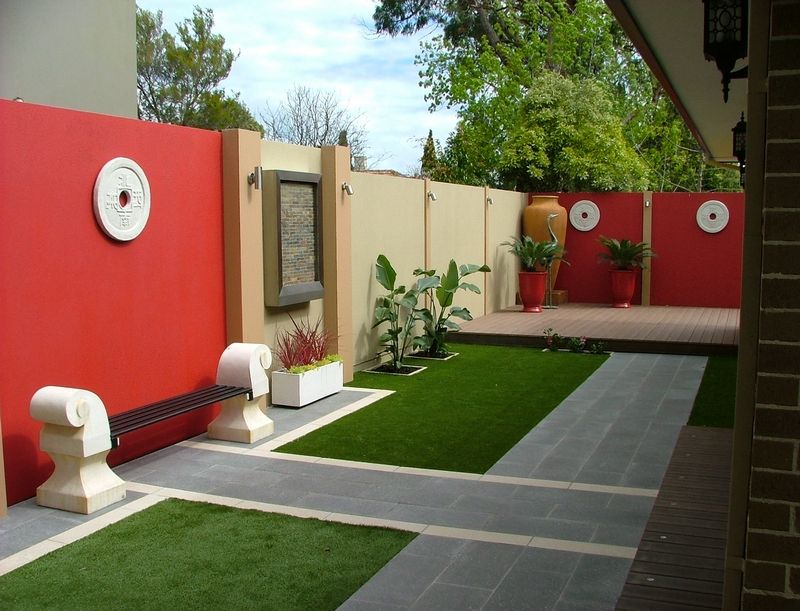
In this case, the structure can be stylized as raw wooden sticks. This idea of external wall covering integrates the building into wildlife as harmoniously as possible. It seems that the house was built from improvised materials taken simply from the forest. There is minimal human intervention.
The idea of external wall covering with stone
Another creative and as close to nature option as possible is cladding of enclosing structures with natural stone or its imitation. Depending on the texture, color, size, the stone can closely integrate the house into the environment or visually pull it out of the environment, focusing on the object.
Sometimes, for contrast, stone is used in exterior decoration next to ultra-modern, even, monotonous surfaces. Due to this decision, the house does not look like an old fortress, a building of past centuries, but looks stylish and fashionable.
Sometimes the material itself is played with a contemporary style.
In this case, the idea of external wall covering is to clad with stone of small size or to use massive, but perfectly smooth, polished surfaces. In general, stone is a universal solution with which you can stylize a building as a century-old dwelling or give it a touch of novelty.
Practical and aesthetic aspects of choosing materials for finishing the exterior walls of a house
Every architectural project starts with the planning of the exterior cladding of the façade. For many years, the decoration of the exterior walls of the house has been made from natural materials. Despite the high cost of raw materials, the owners of private estates prefer to decorate the outer part of the buildings with a beautiful texture of noble tree species. Thanks to modern technologies, there are a lot of different types of facing materials on the market that have an affordable cost and the same presentability.
Main types of exterior wall finishes
Most popular options facade claddings are represented by plaster, natural or artificial stone, facing bricks, ceramic or concrete tiles, decorative siding. It was the latter that became the most acceptable way of sheathing residential buildings.
It was the latter that became the most acceptable way of sheathing residential buildings.
You can see the practicality and beauty of this material on the example of a beach house located in MANHATTAN BEACH (Los Angeles). The decorated exterior wall decoration of the yellow cedar house was specially designed for a young family. active residents preferred to use the simplicity of the form and the gracefulness of the lines, which were realized in the wild geometry of the building.
Technical properties of wood siding
Wood siding is first just an impeccable coating texture, delicate color. Then the customers start study the main advantages of the material, which include:
- Temperature resistance differences - the skin retains its appearance and performance properties when temperature up to -50 degrees;
- Coating durability;
- Environmental friendly;
- Easy finishing process;
- Strength.
Important! Wood siding is recommended for low fire risk areas.
Wood is a combustible material, so it is better not to use panels of this type or treat them with special impregnations, fire and bioprotection.
Facing beams are manufactured by pressing wood chip fibers under the influence of high pressure. Manufacturers add various additives that are responsible for extra strength, wear resistance, UV resistance, mechanical damage.
Graceful texture of a beach house
Looking at the facade of a residential building, immediately there is a feeling of warmth, family idyll, harmony. Pleasant the color of the siding made it possible to arrange the exterior and street parts of the building. The architects used panels to finish the fence, decorate flowerpots under flowers, partitions, outdoor bathroom. Partial lattice present on window openings, which allows you to adjust the lighting in room.
Over the entire area of 350 sq.m. there is a decoration of the outer walls of the house with siding. This selection of Alaskan cedar wood paneling was chosen to protect the structure from the weather in the area. The exterior cladding of the facade is primarily designed to protect the interior space, and only after that - for aesthetic appeal.
The exterior cladding of the facade is primarily designed to protect the interior space, and only after that - for aesthetic appeal.
Despite the complexity architectural construction, experts skillfully arranged the panels, highlighting certain residential areas. The front of the house is distinguished by the presence of a flyover, irregular shapes. The entrance rotary lined with siding looks original Door. As you can see, the absolute cladding of the facade is becoming a stylish direction. along with doorways. Other types of materials, such as plaster or brick, such an opportunity will not be provided. This is the main visual effect of siding.
The Aesthetic Factor in Finishing Materials
Some homeowners will be fine with stucco finishing on the exterior walls of their home, while others will not tolerate artificial finishes. The tree always remains fashionable and demanded. Environmental friendliness plays a decisive role in the choice of sheathing method. The natural texture of the block house is very diverse, and each customer can choose the shade they like.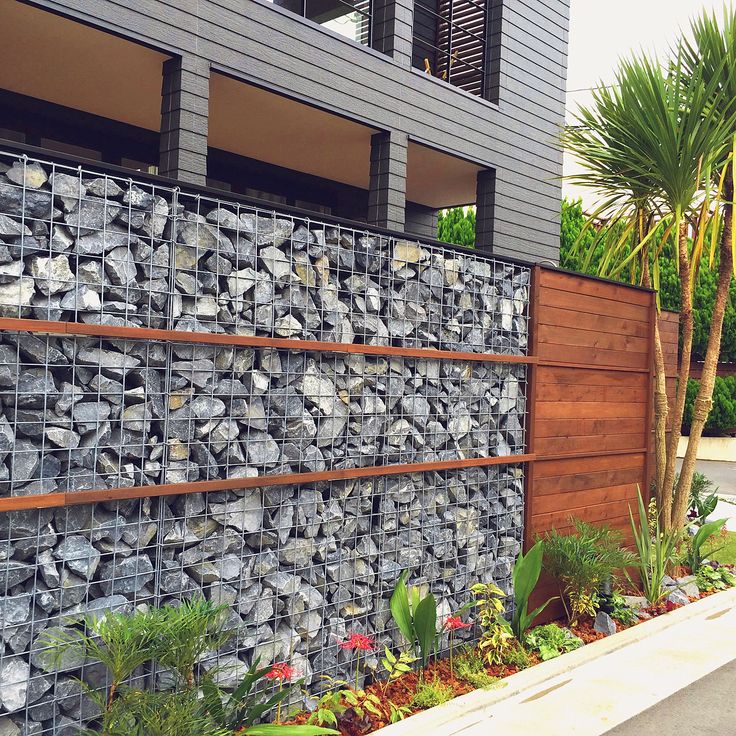 The natural coloring and structure of cedar is the most original of all breeds. A pleasant yellow shade coquettishly plays with the sun's rays, creating shading effects.
The natural coloring and structure of cedar is the most original of all breeds. A pleasant yellow shade coquettishly plays with the sun's rays, creating shading effects.
Modern siding is not just a protective coating, but a decorative way of cladding. Finished exterior walls of the house has a distinctive texture from every angle. The main part of the structure is sheathed with vertical panels, and the overpass is horizontal. In architectural terms, such projects are always distinguished by an impeccable external expression.
Simple and concise lines facades can be transformed into an improved form of the building. outdoor finishing with natural materials gives grace, lightness, which characteristic of the architecture of California houses.
living plants instead of finishing materials
The use of plants for interior design is a fairly popular solution. In almost any modern project, you can see small indoor flowers in original vases or pots, placed on tables, cabinets, special cabinets, and fairly tall specimens, for which, as a rule, a separate area is allocated in a house or office.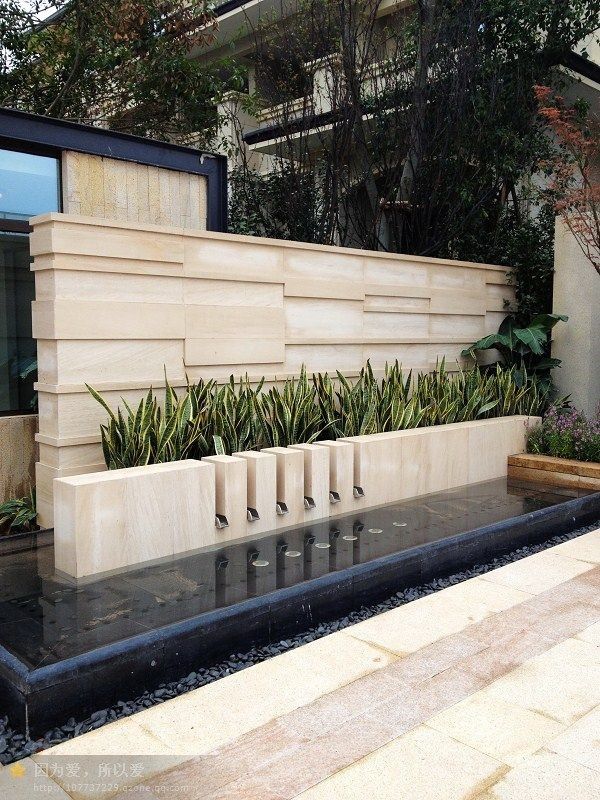
Of course, in many cases, designers use imitation plants, made so believable that you can determine their origin only by touching the leaves.
And this is not surprising, because caring for fresh flowers requires not only significant costs, but also certain knowledge and skills. In most cases, spectacular green decorations are very capricious and require certain lighting, humidity levels and temperatures, so inexperienced owners often get sick or even die.
But how can even luxurious, but artificial palm trees, ficuses, etc. be compared? with living and unsightly plants? After all, it is no secret to anyone that they produce oxygen by absorbing not only carbon dioxide, but also phenol vapor, dust, and radiation.
Some varieties are able to disinfect the air and slow down the growth and development of various microorganisms, increase the humidity in the room, which is important during the heating season.
But besides this, the use of green indoor flowers allows you to embody beautiful interior decor ideas that will please the eye for several years.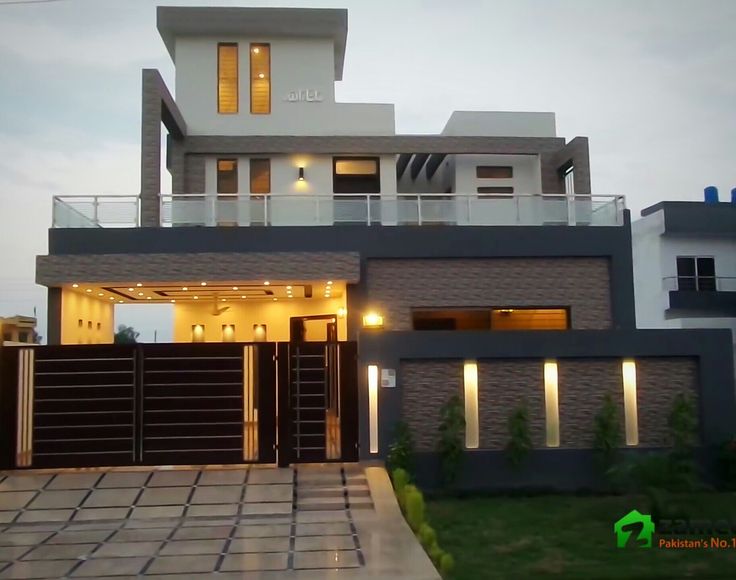
For example, in this theme of our Design Museum website, you can see a very interesting solution related to the design of premises for various purposes.
Its uniqueness lies in the fact that the plants are planted not in separate special containers, but directly on the walls, forming a stunning finish and allowing you to keep a little summer and vibrant beauty in the house.
"Green" walls - a good microclimate in the house
It should be said right away that the idea of greening enclosing structures is not new, and earlier it was used to decorate building facades. At the same time, it was noticed that the microclimate in the premises of such buildings improved markedly, the rate of corrosion processes in the wall material decreased, and the cost of air cooling in summer and heating in winter was reduced.
For example, the researchers found that in those rooms, on the outside of the fences of which there were plants, the temperature during the hot period was 7 0C lower than in other rooms.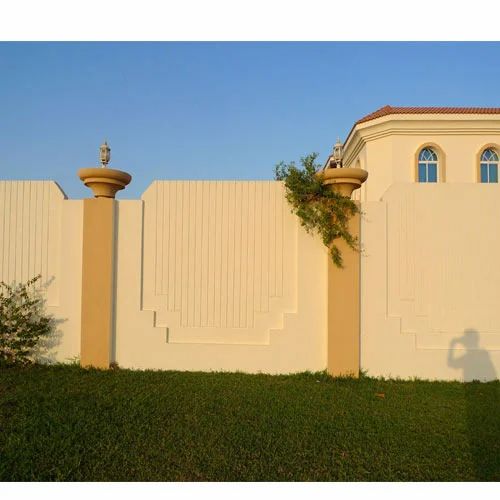 The opposite effect was also observed in winter. Isn't it amazing?
The opposite effect was also observed in winter. Isn't it amazing?
The benefits of plants for health and well-being
And what a calming effect a “living” green wall will have on gray autumn and winter days! Just imagine how pleasant it will be to spend some time in a specially organized living corner.
Sitting comfortably in an easy chair in front of a panel of indoor flowers or other plants, you can just sit in silence, distracted from all thoughts and problems.
Or you can turn on calm music or take your favorite volume of poetry with you. Surely, creative people in such a place will definitely be visited by a muse, and any person surrounded by peaceful greenery will be able to find the right solution to many problems.
Spectacular room decoration
Original room decor ideas with plants can be very effective. Look, for example, at the stunning living room design.
Against the backdrop of a living wall, the designers placed several carved frames of various shapes containing floral patterns.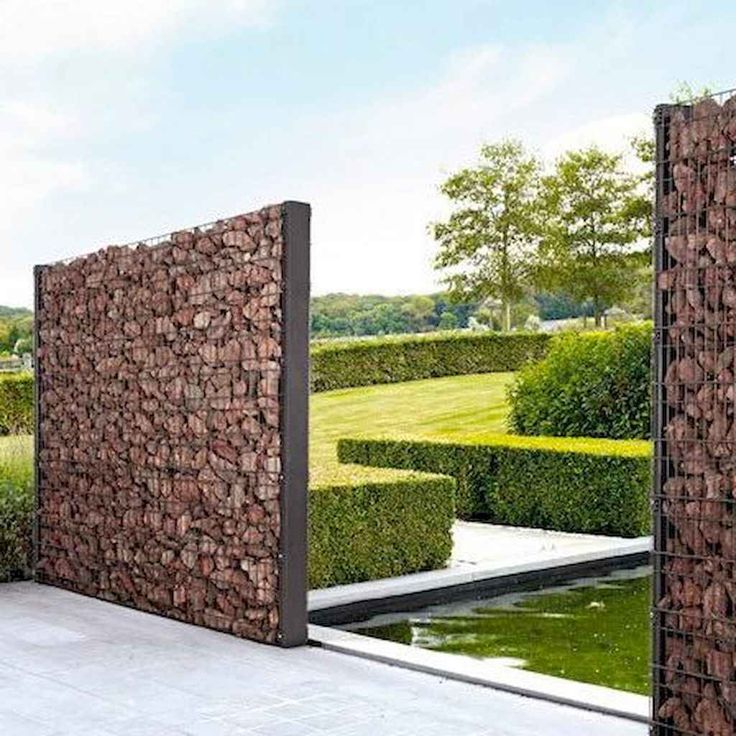 You can insert both family portraits and paintings into them if it is a residential building.
You can insert both family portraits and paintings into them if it is a residential building.
This design will look no less beautiful in a beauty salon or in any store where some goods for sale or demonstrative materials can be placed against the background of flowers.
What you need to know about "living" walls
Of course, such ideas require careful preparation and calculations. First of all, it is necessary to take into account the purpose of the room: for example, plants that emit a large amount of essential oils that can cause headaches or other ailments (geraniums, lilies, hyacinths) should be avoided in the bedroom, and in the kitchen it is recommended to give preference, albeit not so beautiful, but very effective absorbers of carbon monoxide, formaldehyde, etc. (sansevieria, ivy, dracaena).
You also need to remember that some flowers have poisonous juice (primrose, oleander), so after touching them, be sure to wash your hands, and cactus thorns can seriously damage the skin.